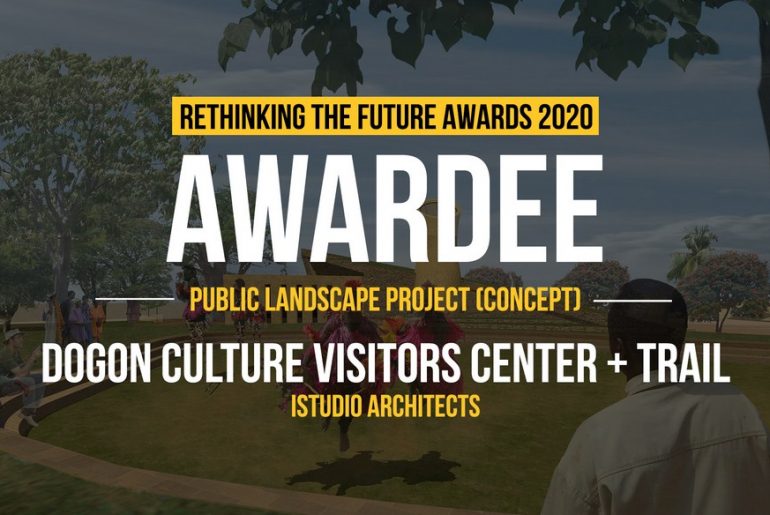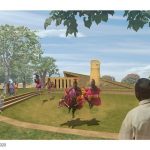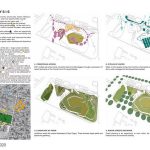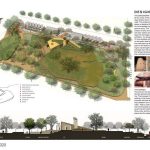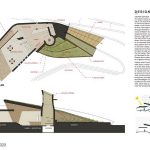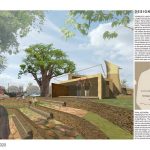Pays Dogon is a place rich in natural beauty and the seat of West African Dogon culture for over 600 years. At the center lies the city of Bandiagara, gateway to this region in sub-Saharan Mali.
Rethinking The Future Awards 2020
Third Award | Public Landscape Project (Concept)
Project Name: Dogon Culture Visitors Center + Trail
Studio Name: ISTUDIO Architects
Design Team: Rick Schneider, Brad Cownover, Portia Strahan
Area: 4,655 square meters (Visitor’s Center) + Village Sites
Year: 2012
Location: Bandiagara, Mali
Consultants: Solimar International, USAID’s Global Sustainable Tourism Alliance, Cultural Mission of Bandiagara (MCB), SNV Office Malien du Tourisme et de l’Hotelliere (Ministry of Tourism, OMATHO), Christina Nardone Foundation, US Forest Service
Photo Credits: ISTUDIO Architects
Other Credits: ISTUDIO Architects
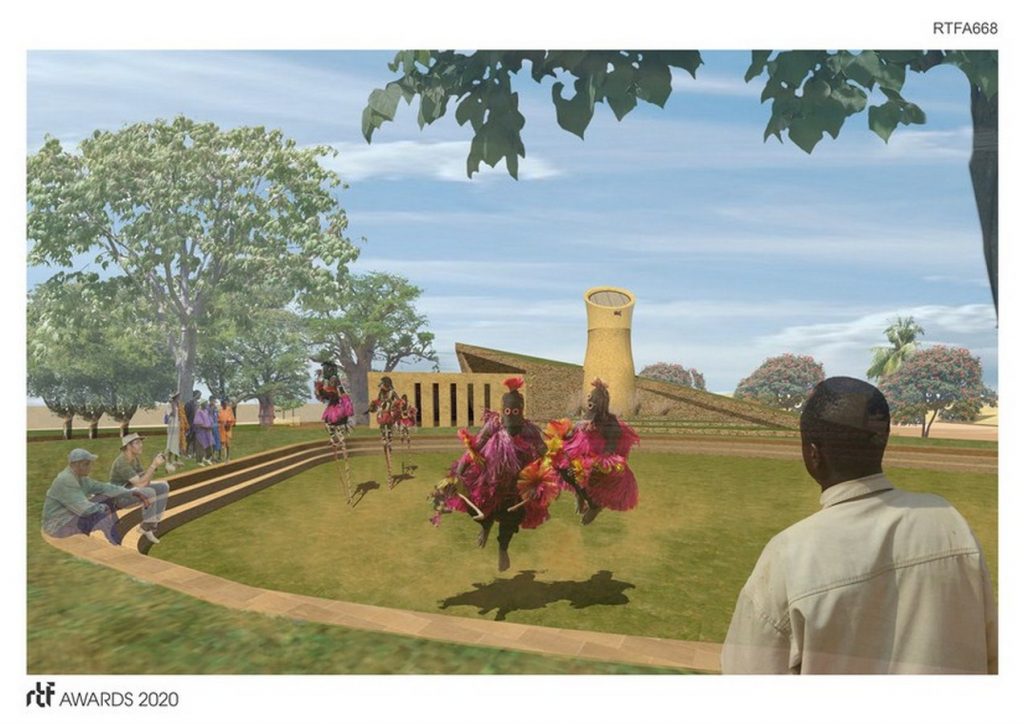
The eco-tourism center for this UNESCO world heritage site is part green design, part urban planning – envisioning a future with tree-lined streets, green space, and a visitor center that is a model for building community resilience. The center is the starting point to a network of trails that lead visitors into historic villages and areas of great natural significance. When complete the project will help to build local capacity for design and construction while providing much-needed tourism revenue.
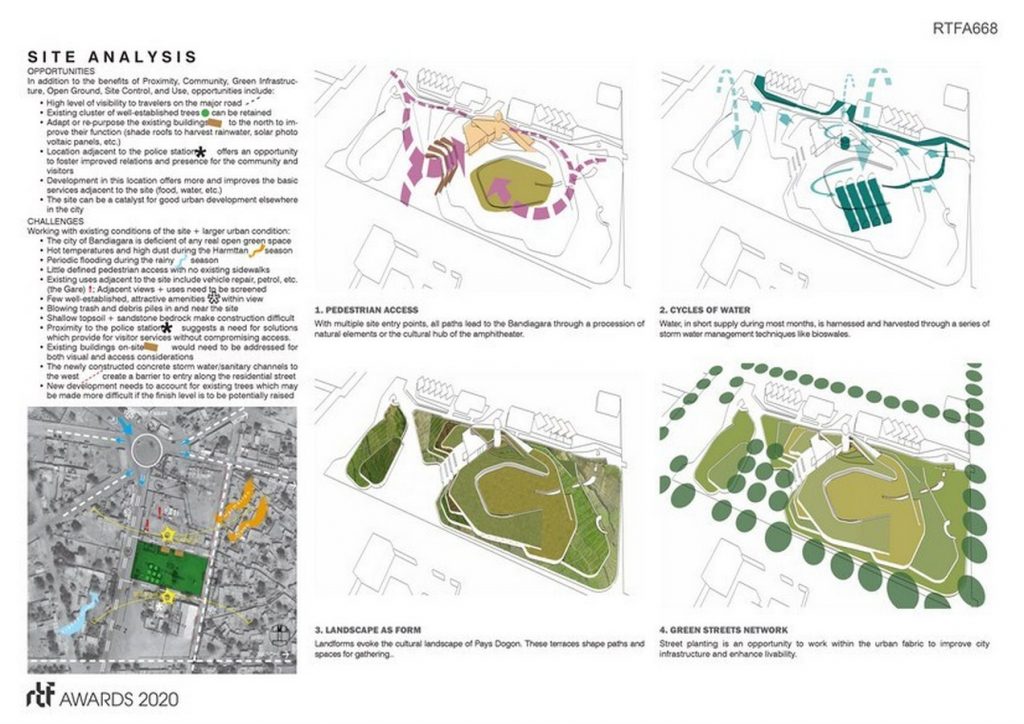
Centrally located in Bandiagara, the proposed Eco-Visitor Center is made up of landforms that evoke the cultural landscapes of Pays Dogon. Stone retaining walls create stacked low terraces planted with indigenous wild and cultivated plants. Adobe walls rise out of the landscape to form a low open building facing southwest toward a public Amphitheater. In Dogon mythology, the river crossed by the ancestors is at the edge of all tales about the people and acts as a boundary to the land. Water, of high cultural value, is incorporated into the design in myriad ways. A sinuous thread of bioswales winds their way across the north edge of the site collecting rainwater to nourish plants and trees in the dry season.
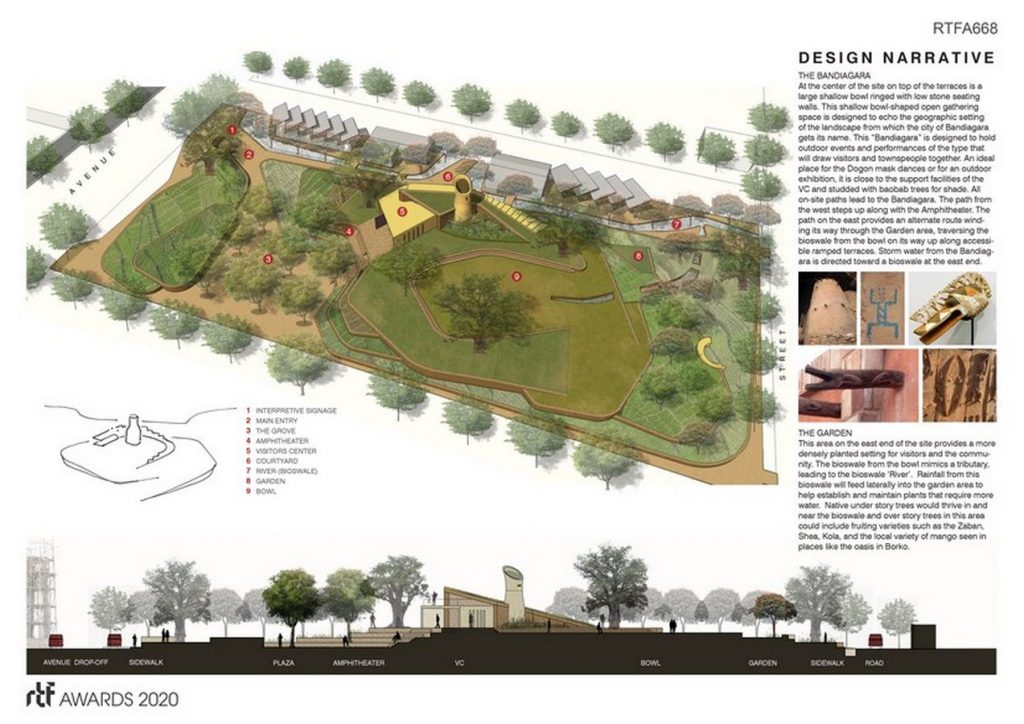
The Visitor Center is designed with low impact development and passive building strategies to provide clean water, fresh air, and natural light while celebrating the Dogon culture. The building is open to trade winds blowing from the southwest and shaped to buffer against the dust storms of the Harmattan from the east. Inspired inform by the caiman and the baobab tree, the center informs visitors of related points of interest and showcases cultural artifacts + events. Elements of Dogon culture are in the details – carved rain scuppers, caiman masks, and the concept of the Kanaga linking heaven + earth, man + spirit. The adjacent amphitheater – formed from a convergence of pathways and planted terraces – provides seating for more structured gatherings like musical performances.
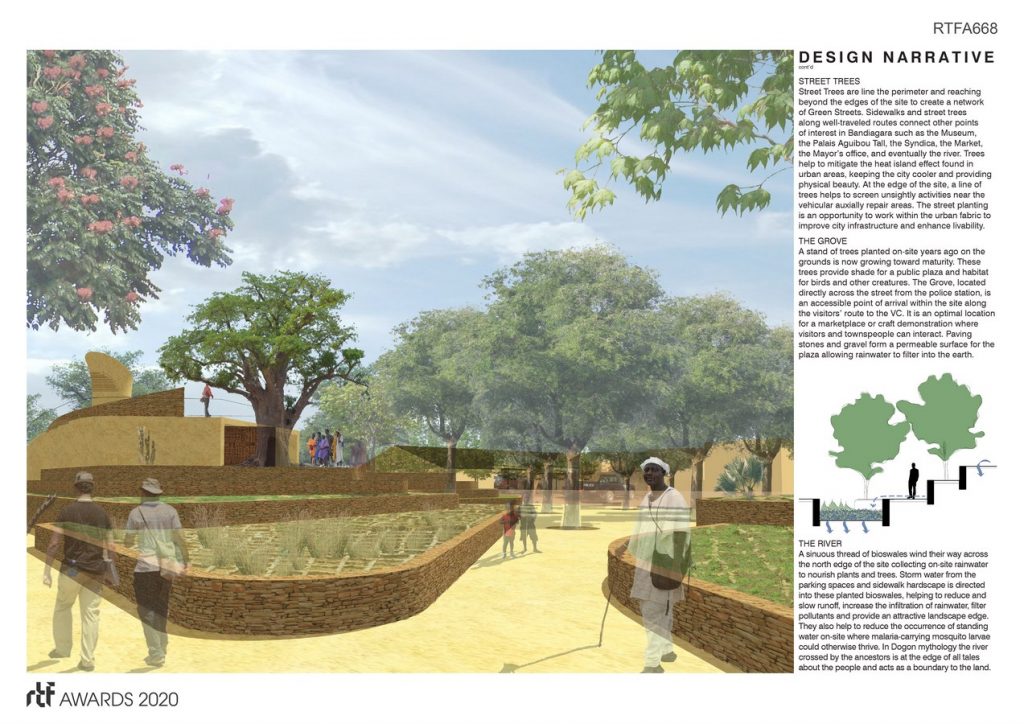
The eco-center is part of a larger network of landscape interventions built-in surrounding villages to connect with the people and land in Pays Dogon. They are examples of climatically responsive architecture taking its cues from the rich Dogon heritage. The team developed designs for 12 villages, and a design guide for future installations emulating the local vernacular. The guide describes designs concepts, materials, and provides a methodology for building drawing on local knowledge and improving local capacity for design and construction.
The process for developing the network included trekking across the Sahel region to meet tribal leaders and design solutions sharing the story of each place. The team worked with the US Forest Service and Solimar International on USAID-funded projects coordinating site selection, assessing local + regional capacity, and developing this vision with city leaders and the Cristina Nardone Foundation.
ARCHITECTURE, CONSTRUCTION & DESIGN AWARDS 2020 IS HERE
Over more than half a decade Rethinking the Future has been a leading organization committed to providing an international platform to not only recognize and acknowledge design talents from all over the world but also to celebrate and share the knowledge that created through a plethora of awards, events and academic dialogues in the field of architecture and design.

